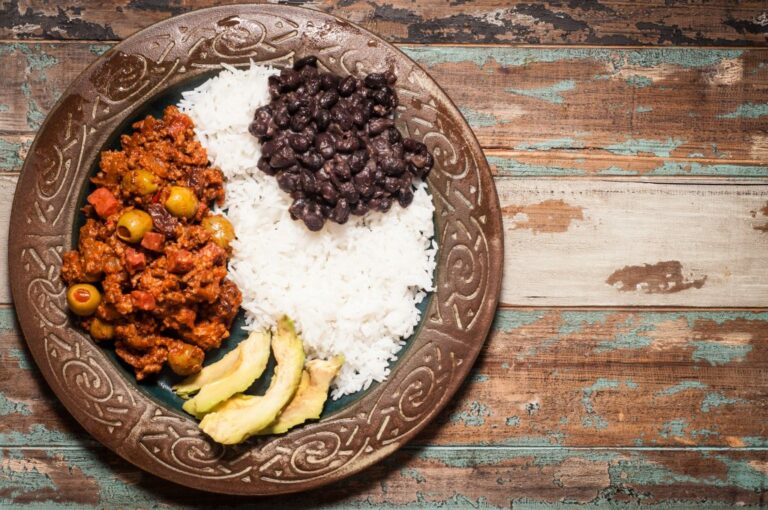Introduction: Exploring Cuban cuisine’s cultural roots
Cuban cuisine is a rich and vibrant blend of various cultural influences that have shaped it over the years. From the native Taino people to the Spanish, African, and Chinese immigrants who arrived at different times, Cuban cuisine reflects the diverse cultural heritage of the island nation. The food of Cuba is an integral part of its identity, and it manifests itself in various ways, from family gatherings to public celebrations, and even in the country’s struggle for independence.
History of Cuban cuisine: a melting pot of influences
Cuban cuisine has a colorful history that dates back to the pre-colonial era. The native Taino people who inhabited the island before the arrival of the Spanish introduced staples like corn, beans, and cassava. With the arrival of the Spanish, new ingredients like pork, beef, and citrus fruits were introduced. The African slaves brought over by the Spanish also contributed to the cuisine by bringing their culinary traditions, such as yams, okra, and plantains. Later on, Chinese immigrants brought their take on rice and noodle dishes, adding their unique flavor to the Cuban cuisine.
Ingredients in Cuban cuisine: from yucca to plantains
Cuban cuisine is known for its bold and flavorful dishes, which are made using an array of ingredients. Some of the staples in Cuban cuisine include rice, beans, plantains, yucca, and pork. Other commonly used ingredients include garlic, onions, peppers, and tomatoes, which are used to add depth and flavor to dishes. Seafood, such as shrimp and lobster, are also popular in Cuban cuisine, particularly in coastal regions.
The role of food in Cuban family gatherings and celebrations
Food plays a significant role in Cuban family gatherings and celebrations. Whether it’s a wedding, a birthday, or a religious festival, food is an important part of the celebration. Families come together to cook and share traditional dishes, creating a sense of togetherness and community. Music and dancing often accompany these gatherings, making them a joyful celebration of Cuban culture.
Traditional Cuban dishes and their cultural significance
Some of the most iconic dishes in Cuban cuisine include ropa vieja, a stew made with shredded beef, and arroz con pollo, a rice dish with chicken. Another popular dish is lechon asado, which is roasted pork. These dishes are essential to Cuban cuisine, and they represent the rich cultural heritage of the island. Other dishes, like tamales and empanadas, reflect the influence of the indigenous Taino people and the Spanish.
Food as a symbol of Cuba’s struggle for independence
Cuban cuisine is also a symbol of the country’s struggle for independence. During the war for independence in the late 19th century, Cuban rebels survived on a diet of rice and beans, which became known as “conga.” This dish was symbolic of the country’s fight for freedom, and it remains an important part of Cuban cuisine today.
Cuban cuisine in the diaspora: preserving cultural identity
Cuban cuisine has also played a crucial role in preserving the cultural identity of Cubans living in the diaspora. In the United States, Cuban restaurants and cafes have become popular, particularly in areas with a large Cuban population like Miami. These restaurants serve traditional Cuban dishes, providing a link to the culture and traditions of their homeland.
The future of Cuban cuisine: innovation and tradition
Cuban cuisine continues to evolve, with chefs experimenting with new flavors and techniques. However, despite these innovations, traditional dishes remain an essential part of Cuban cuisine. As the country opens up to the world, Cuban cuisine is likely to become even more diverse and dynamic, reflecting the country’s rich cultural heritage and its future aspirations.

